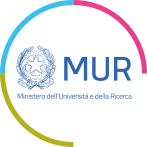Bando per assegno di ricerca
| Titolo del progetto di ricerca in italiano | Using simulations to build an integrated experimental-computational microscope to elucidate the nature of plastic events in colloids. |
|---|---|
| Titolo del progetto di ricerca in inglese | Using simulations to build an integrated experimental-computational microscope to elucidate the nature of plastic events in colloids. |
| Campo principale della ricerca | Physics |
| Sottocampo della ricerca | Computational physics |
| G.S.D. | 02/PHYS-03 - FISICA SPERIMENTALE DELLA MATERIA E APPLICAZIONI |
| S.S.D | PHYS-03/A - Fisica sperimentale della materia e applicazioni |
| Descrizione sintetica in italiano | The final goal of the research project is to lay the foundations for an improved understanding of colloidal flow based on experiments and simulations linked together by machine learning techniques to identify the structural and dynamical precursors of plastic events. The research activity will involve the developing and refining of computational models to replicate experimental systems, exploring parameter spaces to find optimal conditions for experiments, and investigating the internal dynamics and rheology of modeled systems. Simulations will focus on electrostatic repulsion and water-lutidine-mediated critical Casimir forces. Observables such as the self-intermediate function, mean squared displacement, rheological properties, speckle pattern, and softness field will be used to fine-tune simulation parameters to match experimental data. The post-doc researcher will also connect experimental and numerical results using machine learning (ML). |
| Descrizione sintetica in inglese | The final goal of the research project is to lay the foundations for an improved understanding of colloidal flow based on experiments and simulations linked together by machine learning techniques to identify the structural and dynamical precursors of plastic events. The research activity will involve the developing and refining of computational models to replicate experimental systems, exploring parameter spaces to find optimal conditions for experiments, and investigating the internal dynamics and rheology of modeled systems. Simulations will focus on electrostatic repulsion and water-lutidine-mediated critical Casimir forces. Observables such as the self-intermediate function, mean squared displacement, rheological properties, speckle pattern, and softness field will be used to fine-tune simulation parameters to match experimental data. The post-doc researcher will also connect experimental and numerical results using machine learning (ML). |
| Data del bando | 15/07/2024 |
| Numero di assegnazioni per anno | 1 |
| Stanziamento annuale (indicativo) | 27500 |
| Periodicità | biennale |
| Paesi in cui può essere condotta la ricerca |
Italy |
| Paesi di residenza dei candidati |
EUROPE |
| Nazionalità dei candidati |
EUROPE |
| Sito web del bando | https://web.uniroma1.it/trasparenza/bando/220975_179/2024 |
| Destinatari dell'assegno di ricerca (of target group) |
Experienced researcher or 4-10 yrs (Post-Doc) |
|---|---|
| Importo annuale | 27500 |
| Valuta | Euro |
| Comprende lo stipendio dell'assegnista | yes |
| Comprende vitto e spese di viaggio | no |
| Comprende il costo della ricerca | no |
| Massima durata dell'assegno (mesi) | 24 |
| Nome dell'Ente finanziatore | LA SAPIENZA UNIVERSITA' |
|---|---|
| Tipologia dell'Ente | Academic |
| Paese dell'Ente | Italy |
| Città | ROMA |
| Codice postale | 00185 |
| Indirizzo | Piazzale Aldo Moro, 5 |
| Sito web | https://www.phys.uniroma1.it/fisica/ |
| daria.varone@uniroma1.it |
| L'assegno finanziato/cofinanziato attraverso un EU Research Framework Programme? | No |
|---|
| Data di scadenza del bando | 14/08/2024 - alle ore 00:00 |
|---|---|
| Come candidarsi | procedure.fisica@cert.uniroma1.it |
